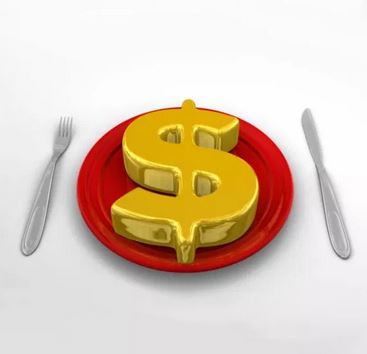The price of food and drink must be well thought out.
The cost of food and drink in a restaurant is an important part of what you pay. A good thought goes as things should cost, and prices are carefully considered before being decided on so that customers get their money worth, While feeling like they got great deals on quality cuisine served with excellent customer service!
The price of food and drink
The calculation of the food cost and the measurement of food and drink sales prices can be traced back to the sum of the following elements:
- cost of raw materials
- other variable costs
- cost of labor
- overhead costs
- profit share.
To carry out this operation accurately, it is necessary to introduce other concepts, those related to the passive cost of goods and the first cost of the dish, as indicated by the accounting manuals in the catering sector. The first cost of the dish is that of the recipe (cost of the quantities and ingredients used). Determining the number of portions of a recipe and dividing the costs for them allows us to obtain the first cost of the dish.
The price of food and drink

The passive cost of goods is instead calculated in relation to the purchase of the goods necessary for the realization of a recipe. In other words, it refers to every material, every ingredient and consequently also as the sum of all the materials.
The price of food and drink
The time variable
The correct calculation of the food cost must also take into account the time: the analysis period is generally the month, the quarter, or the year. Furthermore, the meals offered by the entrepreneur and those consumed by the employees must be counted, because in this way the net cost of the purchases of materials of the period is obtained.
The price of food and drink
The definitive formula for calculating the food cost thus becomes the following: “Net cost of food goods / Adjusted revenues” * 100 (Adjusted revenues are obtained by taking into consideration the meals offered by the entrepreneur and the cost of meals consumed by employees, because the related cost must be recovered with sales). Once the food cost is obtained, it is necessary to proceed with the so-called “factor method”, which consists in multiplying the cost of the raw materials by a coefficient, in order to obtain the selling price of each menu item. How to do? To have the coefficient we will have to:
- set to 100 the selling price of what we want to offer to customers
- divide the selling price for the food cost percentage calculated as previously seen
- then “100 / Food Cost” (eg 100/40 = 2.50), with food costing 40%.
The value obtained is the coefficient which, multiplied by the cost of a dish, will give us the “indicative selling price”, because the choice of the selling price of a dish also depends on the analysis of the quantity sold and its margin, but also of the overall margins of all the commercial activity.
The price of food and drink
Food Cost: other economic indicators
The price of food and drink
There are also other indicators that can help a restaurant chief to keep an eye on the performance of his business, such as the quality / price ratio, which is important because it allows to establish the type of consumption preferred by his customers. To accurately calculate this indicator you need two intermediate steps: the first is to determine the average price charged to customers through the formula “Total sales / Nr. Dishes served ”.

The second is the calculation of the average price offered by the restaurant, with the formula “Sum of prices of all courses / Nr. of the dishes that make up the menu ”. Finally, we take the two results obtained and relate to each other to obtain the “quality / price” ratio: “Average price charged to customers / Average price offered by the local”. If such the value of this formula is between 0.9 and 1 it means that there is a balance between the offer of the venue and the choice (or expectation) of the clientele.
The price of food and drink
A result lower than 0.9 indicates that our customers are moving towards lower prices, and finally a result higher than 1 makes us understand that customers generally choose the most expensive dishes, which show a balance between the quality of the food and the its price.
Cost of goods, labor costs, revenues, meals offered, “quality / price” ratio: so many elements that could make the calculation of the food cost seem extremely complicated but, in reality, once acquired a certain confidence with the material, are strategic for the success of a restaurant.


